The continuing Ascent of Podcasts
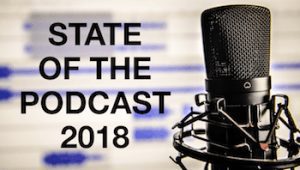
Updated April 2020: The new 2020 State of Podcasting is out now.
Podcast consumption has continued to grow steadily since my last ‘State of the Podcast 2015’ on this blog. One can safely say that the word “podcast” is now well and truly anchored in our mainstream vocabulary (at least in the western English-speaking world). Indeed, 64% of people in the US are familiar with the term of podcasting. Listening has also increased considerably. In 2013, in the US, 24% of people regularly listened to podcasts, now it’s 44%, with fully a third listening on a regular (almost monthly) basis. {N.B. Sources for all stats in this post are listed below} People are latching on to the particular benefits and features of a podcast: the convenience (anywhere and everywhere media), the informality, the intimacy, the storytelling… And those who are serious about their podcasters are getting better at creating quality programmes. For similar reasons, we’ve also seen the continued success of the audio book (according to Edison Research, 44% of adults over 12 years old have listened to an audio book). The same research indicated that penetration of adults for online audio had increased to 64% (180 million) in the US. However, it would be misleading not to put the US figures in a greater global context as, according to Statista, podcasting is far more popular in South Korea.
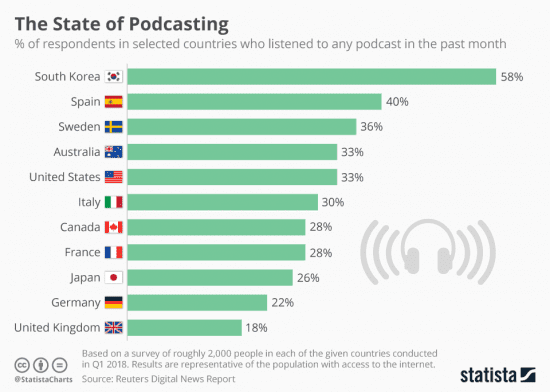
Meanwhile, Apple announced earlier this year that, since starting to distribute podcasts in 2005, 50 billion episodes all-time had been downloaded or streamed. Given the trend over the last three years, it’s probable that there will be nearly 17 billion episodes downloaded this year (versus 13.7B in 2017).
One standout for podcasting now versus three years ago is the existence of far more data. We’re starting to see more tools and platforms for distributing podcasts and targetting listeners. Yet, as we’ll see below, the economics for podcasting remain subpar in the West. Maybe they should take their cue from the Chinese, where podcasting generated an estimated $7.3B in revenues in 2017 through subscriptions.
Podcast Production
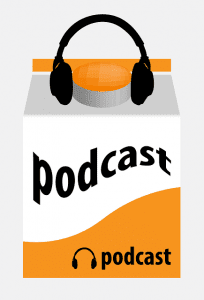
One would expect the rise in listenership to mean that more podcasts are being created than before. So what is the number of podcasts in existence today? According to Apple, there are 525,000 shows listed on iTunes — all languages combined. This statistic, though, does not give the full picture when it comes to podcasts. To a great degree, this is because of the drastic dropout rate of podcast producers. Indeed, Todd Cochrane (CEO at Rawvoice/Blubrry) estimated that in the previous two years, 200,000 new podcast titles appeared, and yet today more than half of those are out of production. A good number of the discontinued podcasts are just because the originator was only testing the waters or had a limited cycle of podcasts intended. Others just run out of steam.
Thus, if we want to know how many podcasts exist today, we should really be looking at ‘active’ podcasts. That is: podcasts that have published a new episode within the last three months. If we use this rule, the number comes down to 120,000 (and 108,000 with a fresh episode in the last month). Whilst this is still a large number, it is actually stable with the number reported by this blog in 2015. This lack of increased production is surprising in light of the uptake of podcast listeners. It might be due to a more stringent definition of ‘active’ or the inclusion of foreign language podcasts previously. Podcasts come in over 100 different languages on iTunes. Moreover, what defines a podcast? Does a recorded live speech uploaded on a podcasting hosting service for a one-time episode truly count as a “podcast”?
Podcast Concentration?
Whatever the reasons for the stability in the number of active podcasts, there seems to be a trend towards a concentration of listening of an elite set of podcasts. Compared to three years ago, the small independent podcasts have been displaced by bigger, more recognised name sites. The top 100 include individual personalities as well as many media names (NPR, BBC, Slate, NYT, iHeartRadio…). Among the independents, the Joe Rogan Experience is systematically tops with some 30 million downloads per month. Given that 73 million people download podcasts at least once a month in the US, the Joe Rogan Experience likely has a pretty large share of the market, even more than podcasts like This American Life and one of my favourites, Radiolab. This tilt towards elite podcasters is hardly surprising. From newspapers to TV it has happened in almost every other form of media. One could say it’s part of the maturation process.
Trends in the Podcast Industry
Beyond this concentration of the podcast market, there are some interesting trends to be picked out. Podcasts, unlike video, naturally gravitate towards the niche, weird, and independent due to the relatively low barriers to entry: podcasts have low start-up costs and the only nominal skill required is to speak interestingly on a topic of your choice. Podcasts then can reveal trends and feelings in society which are not as easily encountered in more traditional forms of media. There are a several trends that I wanted to pick out, namely: the popularity of religious & spirituality podcasts, the rise of the ‘Intellectual Dark Web’, storytelling and kids.
The rise of Religious & Spirituality Podcasts
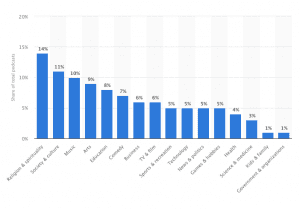
So what is the most popular genre? As it turns out, according to Statista, ‘religion & spirituality’ tops the list, even though individually, none is listed in the top 50 in iTunes (e.g. Joel Osteen comes in at #84 this week). One has to believe that the bulk of these podcasts are small in audience, albeit presumably a dedicated set of listeners. Another reason for their popularity may be attributed to the great independence and freedom associated with podcast creation. Is there a certain counter-cultural aspect to this? At a time when religion, and particularly conservative religion, is being forced out of the mainstream, there is a strong core traction with certain cultural trends. The podcast provides them with a means of communication outside of the mainstream. It should be noted that the spirituality (as opposed to religion) are popular because of the intimacy of the audio format. Here is a list via Stitcher of the recent top listened podcasts in the genre of Spirituality & Religion [link defunct].
The Intellectual Dark Web (IDW)

Another interesting phenomenon in the world of podcasts is the so-called ‘Intellectual Dark Web’ (IDW). The IDW, coined by one of its members, mathematician Eric Weinstein, is not an official group. Indeed, the moniker may or may not survive the test of time. It refers less to the content of the ideas – which have often been called out as a conservative provocation – and more to the platform upon which they exist. Indeed, the so-called IDW encompasses a variety of political and social viewpoints from the controversial right-winger Ben Shapiro (see below), the conservative Christina Sommers and Jordan Peterson, to the left-leaning Sam Harris through to the more progressive Bret Weinstein (see left), brother of Eric.

Whether or not you agree with the IDW members or their constituent positions, there are common facets which bind them including wanting to bring civil debate back to society. They have also fashioned large followings across multiple media platforms, including podcasting. With episodes lasting up to 2+ hours and episodic downloads in the millions and tens of millions, the members of the IDW are becoming like rock stars. The profoundly interesting point is that the long-form podcast as a medium is surging — even among the younger listeners, who are often criticised for short attention spans. Moreover, the IDW members are also capable of moving books and selling out concert venues, just to listen to them debate.
So-called IDW members with podcasts in the top 100 include an impressive roster: Jordan Peterson, Sam Harris, Joe Rogan, Dave Rubin, Dan Carlin and Tim Ferriss.
Podcast Storytelling going Mainstream
Podcasting is a great media for telling stories, whether as entertainment or for news reporting. With increasing sophistication, we’re seeing podcasters exploit the audio format. In the wake of the Serial phenomenon, certain investigative journalists have explored how to use the podcast to recount their work. I highlight Reveal and the series 74 Seconds by NPR Minnesota. PlayerFM released this list of best investigative journalist podcasts. In that same vein, I’d say that the ASMR trend looks to exploit more sophisticated audio capabilities.
Kids’ Podcasts
Whereas kids (12-24) are consuming audio media well ahead of their elders, the younger generation have been a bit slower to take up podcasts per se. Thanks to more adapted product, however, kids’ podcasts have started to take off with shows like NPR’s “Wow in the World,” Peace Out (Bedtime FM), WHYY’s Eleanor Amplified, and the goofy What if World. You’ve also got Gen Z Media’s audio dramas and the popular This American Life from NPR. There’s now content for all ages.
The Economics of Podcasting
One of the first things to understand about the economics of podcasting is that few podcasts make money. More importantly, the vast majority of podcasts don’t seek to make money, at least not at the origin. Only 1 in 14 podcasts get more than 5,000 downloads and the average number of downloads per podcast is 143 — not a good basis for an advertisement or sponsorship model. It’s been interesting to see how Sam Harris has evolved his business model. With his desire never to be backed by (or chained to) a financier that would limit his freedom (read: sponsor or advertiser), he has reached a level of professionalism that requires investment (a custom app, servers capable of handling millions of downloads, production and editing…). As such, Harris has gone from completely free to voluntary donations to a freemium model, with a constant push for a monthly subscription.
Meanwhile, the ad revenues from podcasting continue to trail expectations considering the number of listeners. According to the Interactive Advertising Bureau, ad revenues chimed in at a self-reported $314MM in 2017 (although Statista puts the number even lower at $207MM). If we did a simple calculation against the 120,000 “active” podcasts with at least one episode in the last 3 months, that would equate to $2,617/podcast. It’s my belief that one of the drags on monetising podcasts is the clunky user experience to click out of a show to some observable action, including ease of sharing. But, mainly, it’s similar to the media business where free is the general expectation. The IAB anticipates that the podcasting revenue figure will more than double by 2020.
The Professionalisation of Podcasting Services
The higher calibre of podcasting host services and the proliferation of podcast delivery mechanisms have certainly contributed to the rise of podcasting. One interesting development that may help podcasters improve their service and monetisation is Apple Analytics. Up until now the general data on podcasts has been weak. This changed in late 2017 when Apple released its podcast ‘analytics’ feature. The new feature – taking the shape of a visual dashboard displaying in-episode aggregate completion and drop-off rates – means that producers can begin to understand a lot more about how their podcasts are consumed. This data could help podcasting rival YouTube (which is a complementary channel to the audio podcasts) and Instagram as spaces where digital creators can make their mark.
Meanwhile, the economics of podcasting in China are tremendously different. With the content being largely instructional (e.g. coaching) or educational, the market has endorsed the subscription model. In 2017, Marketplace reported that revenues were estimated to hit $7.3B, with these revenues generated through subscriptions. The Chinese podcasters are monetising for their reputation and providing content that is considered valuable enough to buy for eager workers wanting to get ahead. The podcasters generally do revenue-shares with the audio platforms, such as Ximalaya, iGetGet (得到), Fenda and Zhihu. It’s definitely big business and they’re also getting into the MOOC as pay-for-education. Ximalaya is the dominant player, claiming to have 450 million users with more than 5 million hosts.
The Outlook for Podcasting
Overall, the future for podcasting remains bright, but we can expect further consolidation among the top leaders. We might even see more in the form of M&A as podcasting tries to regroup in an effort to bridge the gap in its economics versus other media. The growing penetration of smart speakers should spur more audio podcast consumption in the home. With more transparency and data, I see the economics of podcasting improving considerably, although mostly for those who can show and provide consistent value. Finally, I expect to see more foreign language podcasts in the top 100 by 2020. For sure, we can also expect the Chinese podcasting market to explore and expand tremendously.
Article co-written with Nicholas Robson
Sources:
- Audio Boom:How podcasters make a living
- Convince&Convert
- Edison Research Infinite Dial 2018
- Email exchange with Rob Walch, VP of Podcaster Relations at LibSyn
- FAST Company – Apple’s podcasts just topped 50 billion downloads
- Fatherly choice of best kids’ podcasts
- Financial Times: Audio Boom. How Podcasters Make A Living
- Hackernoon
- Minter Dial
- New York Times: Best Podcasts of 2017
- Podcast Insights
- Shiva Bhaskar on Medium (June 2018)
- Statista
- Steve Goldstein: How many of the 540,000 podcasts have podfaded? on RainNews

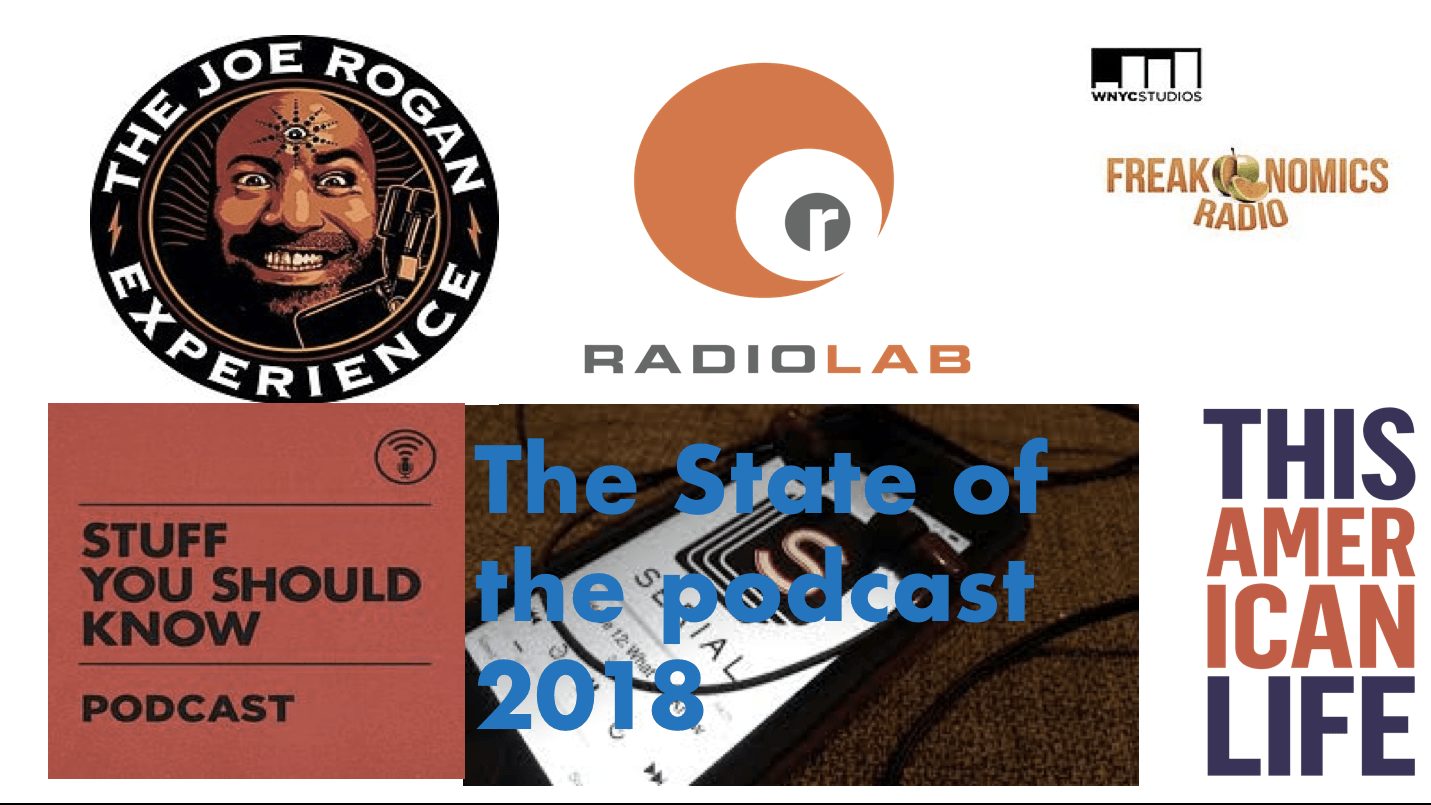










Trackbacks/Pingbacks